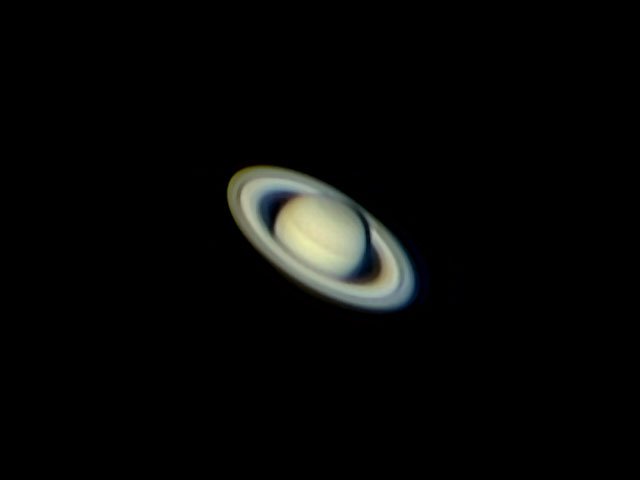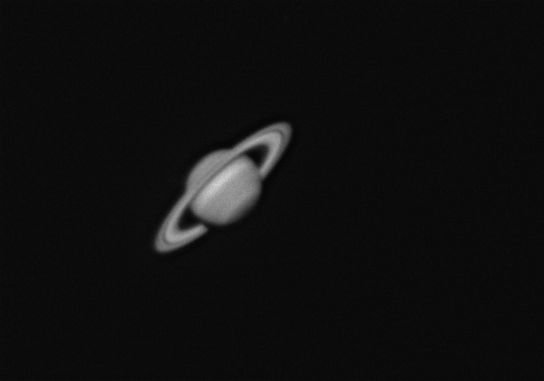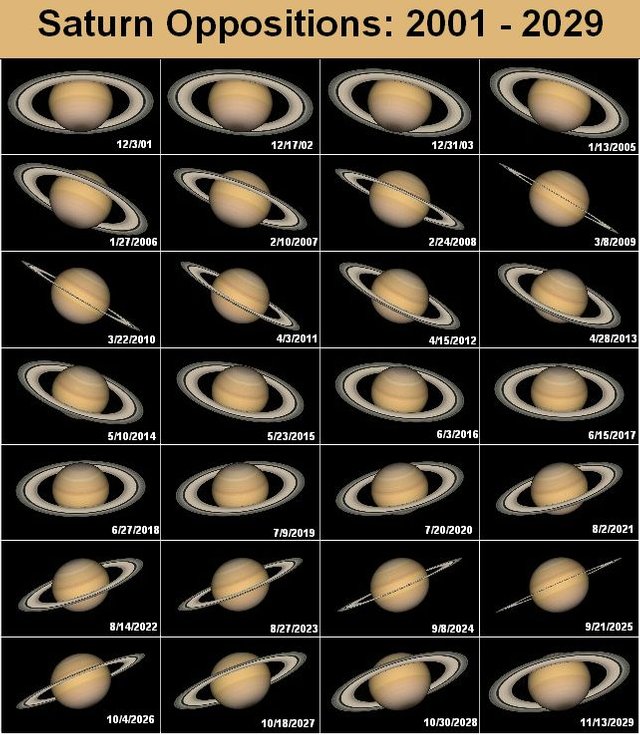Astronomical observations #4 : Saturn
The Saturn planet is quite easy to find. It looks like a yellow star in the sky, but the binoculars already show that the object isn't an ordinary point in the sky but a planet with an oval shape of rings.
Saturn is quite easy to find almost all year. When viewed with the naked eye, it resembles a yellow-orange star. It moves along the ecliptic as other planets (it travels in the sky through the constellations of zodiac signs). He's 30 years in full circle of the sky. It is the second largest planet in the Solar System. Due to the greater distance from the Sun, its angular dimensions in the sky are not as large as in the case of Jupiter. For more than 15 arcseconds (the planet farthest from the Earth) to 21 arcseconds during the opposition (maximum close to Earth). Depending on the position, its brightness varies between +3 and -2 mag (opposition). In perfect conditions, by a large amateur telescope with a mirror diameter of over 12 inches, you can get the views as in the picture above.
Saturn is a gas giant as rapidly changing as Jupiter, but here we can't see as much detail as on Jupiter. Twice the distance is doing its job. In larger telescopes, sometimes darker equatorial bands can be seen. Sometimes white clouds appear in the equatorial region. Saturn's observation is assisted by the use of a blue filter or the observation of the planet in the bright sky at dawn or dusk. Almost every telescope can see the largest moon of Saturn - Titan. The 6'' (150 mm) telescope allows you to see 3 other moons on the planet. They don't line up like the moons of Jupiter. They can be seen on either side of the Saturn's shield. The greatest attraction of Saturn are its rings. Because its equator is inclined to the orbit at an angle of 27 degrees, the appearance of the rings changes. Sometimes they are very sloping towards us, sometimes they are standing sideways to us. The illustration below shows the variability of their arrangement.
In 2009, they disappeared for a few days, because the Earth was in their plane, and they are too thin (they are only 2 km thick) so that they could be seen in such a setting. From Earth you can see the three main rings of Saturn. The outermost ring A separates from the central ring B the dark Cassini Division with a width of 4800 km. It is visible already well in the 8'' (200 mm) telescope. I hope that these few tips will be helpful for you.
Greetings to lovers of Astronomy!
Sources:
Saturn
Rings of Saturn
Titan
and my knowledge...
All rights reserved by @astromaniac 2018



So by that logic of the pictures of how Saturn has rotated by the years.
A full circle like that is made by 29 years
Saturn is the best object for small scopes. After that globular clusters are a close second.
Oddly, the worst objects are galaxies. The visual reality in the scope does not meet the hype except in photos.
Yes. I remember the view of Saturn in my first telescope. The planet was tiny, but the rings and colors were visible like in color photos.